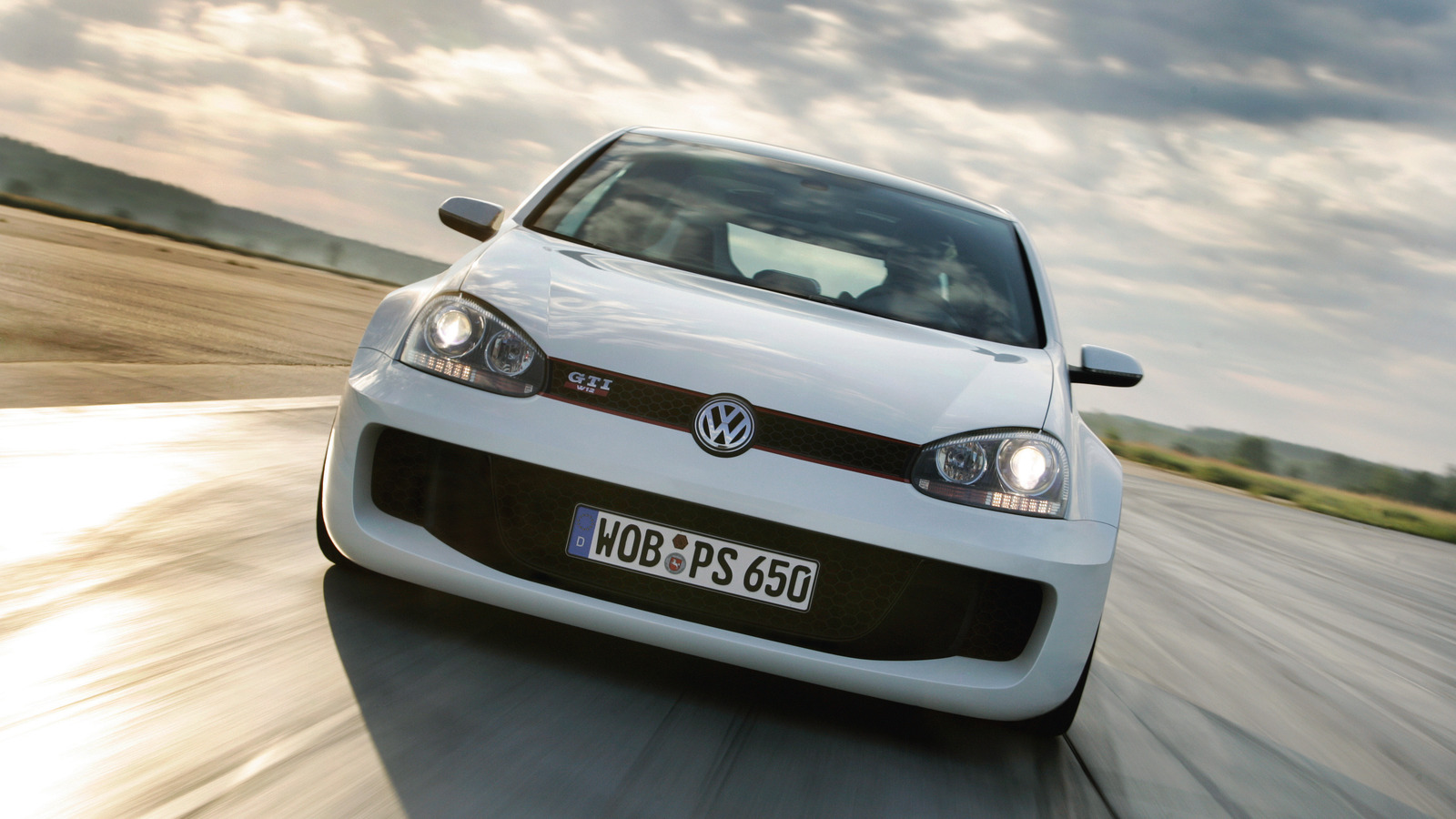The Golf GTI symbolizes the essence of a hot hatchback. Starting as a humble two-door 110-hp hatch over 40 years ago, the Golf GTI has become an iconic legend through numerous successful generations and countless variations and concepts. But let’s dive into that one instance when Volkswagen went absolutely bonkers with it.
Advertisement
In 2007, Volkswagen aimed to amaze a sizable gathering of devoted Golf enthusiasts in Wörthersee, Austria. This small lake town hosted an annual event dedicated to the Golf GTI from 1982 until its discontinuation in 2023. Instead of unveiling just another upgraded GTI version, VW revealed something truly extraordinary — the Golf GTI W12-650. Possibly approved by a whimsical executive, this unique Golf GTI concept was powered by a W12 engine producing an astonishing 650 horsepower.
Installing a W12 engine in a Golf is like fitting a jet engine in a go-kart. The car had so much power that the glove box was designated for a fire extinguisher. This is how Volkswagen presented the most outrageous version of the Golf GTI at Wörthersee Treffen. It’s crucial to revisit all the modifications Volkswagen had to make to a production-grade Golf to achieve this feat.
Advertisement
Body modifications to retrofit the W12 engine
Underneath the familiar Golf exterior, a tremendous transformation occurred with the incorporation of the W12 engine. It was a 6.0-liter, twin-turbocharged W12 engine, far surpassing the standard turbocharged four-cylinder GTI engine. W12 engines, such as this one, are often found in supercars like the Bentley Continental GT and the Audi R8. The unique design comprises 12 cylinders in an unusual configuration, featuring two narrow V6 engines angled at approximately 15 degrees.
Advertisement
As mentioned, the Golf GTI’s engine produced 650 hp — while the standard GTI generated around 200 hp at the time — and 553 lb-ft of torque. To manage this immense power, a six-speed automatic transmission was borrowed from the Volkswagen Phaeton limousine.
To house the massive engine, significant modifications were made to the original Golf’s body. The team adopted a mid-engine design, relocating the engine behind the driver’s seat. This required a major reconfiguration of the car’s layout. The Golf’s body was widened by a substantial 6.3 inches to accommodate the necessary cooling vents for the mid-mounted engine and to allow for a wider track. This was achieved by removing the rear seats and moving the fuel tank to the front. The GTI’s C pillar was also redesigned to incorporate functional vents to channel airflow to the engine, meeting its significant demand for air. The power was delivered to the rear axle, unlike the front-wheel-drive configuration of the 2007 Golf GTI production model.
Advertisement
Meticulous improvements to the GTI
Volkswagen devoted significant effort to optimizing both the interior and exterior design of the W12 vehicle. The redesigned bumper featured larger air intakes at the front and a prominent diffuser and large spoiler at the rear. To reduce weight and enhance the Golf GTI’s sporty aesthetics, Volkswagen used carbon fiber for the roof. For better grip on the racetrack (since the specifications were far from street legal), VW opted for 19-inch alloy wheels with 295/30 ZR19 tires.
Advertisement
In addition to the supercharged engine and modified chassis, Volkswagen lowered the suspension system by approximately 2.75 inches to reduce drag at high speeds and improve weight distribution with the mid-body engine. Inspired by supercars, the creators matched the heightened speed with equally capable braking power. The reimagined Golf GTI was equipped with 15-inch front disc brakes from the Audi RS4 and 14-inch discs from the Lamborghini Gallardo.
Beyond the exterior, the interiors of the Golf GTI W12 were revamped to add a sense of sportiness and luxury akin to the cars from which it borrowed its engine. These modifications included a sporty bespoke instrument cluster with round gauges tailored to the W12-650’s performance. The dashboard featured dedicated buttons for crucial features such as ESP, with transparent switch covers to prevent accidental activation. Meanwhile, bucket seats wrapped in premium black Alcántara upholstery exuded luxury.
Advertisement
Setting examples for hot hatchbacks
It’s disappointing that Volkswagen made all these enhancements but did not disclose the associated performance numbers. Estimates suggest that the formidable Golf GTI could accelerate from zero to 60 mph in under 4 seconds and exceed 201 mph. Although these figures paint a compelling picture of the GTI W12’s driving experience, experts who test-drove the car raised concerns. Refining such raw power for a production-ready vehicle would have required more resources than Volkswagen was willing to allocate — especially as it would sacrifice the practicality, accessibility, and affordability of the actual Golf GTI. Despite possibly underestimating the potential fan (or collector) base for the Golf GTI W12, creating a street-legal version would have been a monumental challenge.
Advertisement
Although the W12 was a one-off creation, its legacy continues in the Golf’s ever-evolving GTI lineup, which has gained more power over the years. The current 2025 model, available in Europe, delivers 261 hp through its 2.0-liter turbocharged engine.
Perhaps one day we’ll witness another GTI concept as wild as the W12. Until then, it remains a benchmark for untamed hot hatches and sets the stage for exotic concept cars like Volkswagen’s electric Golf GTI concept, the ID.GTI. Despite tantalizing successors, it will always be the special Golf model that enthusiasts wish they could purchase.





